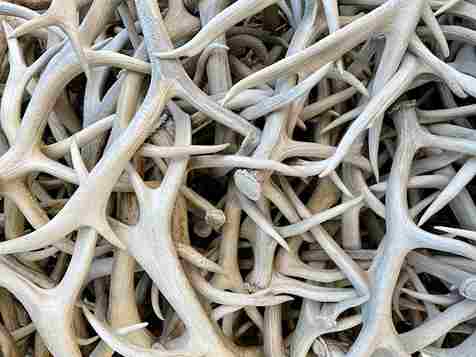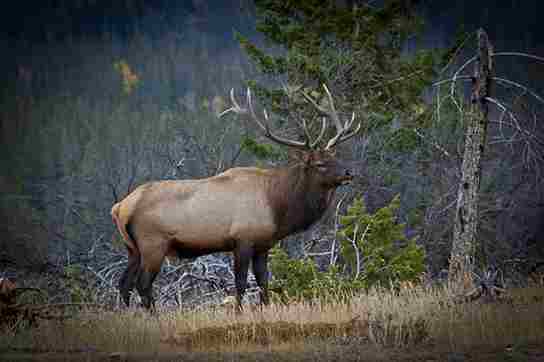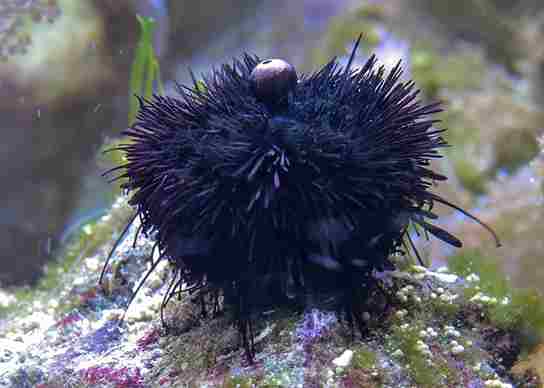Deer vs. Elk Antlers for Dogs? How to Choose!
Antlers make a good treat for dogs, especially when they are small and digestible. They are even better when you want to save money on chew toys since they don’t splinter easily. If you’re thinking about feeding it to your dog, you may not be sure of all the options available.
Deer and elk antlers are pretty popular, but which one is better for a canine? Let’s look at that today. I want to show you what I’ve discovered about using either deer or elk antlers as potential chewing toys for your furry friend.

What Are Antler Chews?
Antler chews are natural chew toys made from the shed antlers of deer, elk, or other cervids. Like regular chew toys, their primary purpose is to keep your dog engaged and reduce boredom. But as you would expect, they also help to strengthen the dog’s gums and teeth as long as you’re using the right antler chews.
So, if you have a dog that chews a lot, I would definitely recommend antler chews. The mere fact they are naturally sourced makes them even more nutritious. Specifically, antler chews contain calcium, phosphorus, and other essential nutrients.
Also, compared to toys or bones, they don’t splinter easily and tend to last longer, which saves you money on actual chew toys. In addition, they make more sense for our dogs since they are “natural.”
Benefits of Antler Chews
Besides the fact that they are natural options, here are a few benefits of giving your dog antler chews:
- Eco-friendly: As antlers are naturally shed by deer and elk every year, no animals are harmed in the process of collecting them.
- Dental health: Chewing on antlers can help remove plaque and tartar buildup, promoting good oral hygiene for your dog.
- Nutrient-rich: Antlers are packed with minerals such as calcium, phosphorus, and magnesium, which are beneficial for a dog’s overall health.
Deer Antlers for Dogs
Here are a few things you need to know about deer antlers for dogs:
- Denser than elk antlers: The main difference between deer antlers and elk antlers is that deer antlers are usually denser. As a result, they tend to last longer, especially for aggressive chewers.
- Has a straighter shape: Deer antlers are typically straighter and have fewer branches or forks. As a result, some dogs may find them less interesting.
- Readily available: Deer antlers are more readily available and can be found in most pet stores, making them easily accessible for most dog owners. They also come in various sizes, making it easy to find the perfect fit for your dog.
- Odor-free: Unlike some other chew toys, deer antlers don’t have a strong odor, making them a more pleasant choice for both dogs and their humans.
Elk Antlers for Dogs
Like deer antlers, there are a few things that stand out about elk antlers:
- Softer texture: Elk antlers are slightly softer than deer antlers, making them a more suitable option for dogs with sensitive teeth or gums.
- Larger size: Elk antlers are generally larger than deer antlers, providing a more satisfying chew for larger breeds or dogs with a strong chewing drive.
- Interesting shape: Elk antlers often have a more interesting shape, with more branches and forks that can pique a dog’s curiosity and keep them engaged for longer periods of time.
Deer vs. Elk Antlers for Dogs: Which One To Choose
In order to choose between deer and elk antlers for your dog, there are a few things you need to consider:
Chewing habits
If you have a dog that chews aggressively, a denser deer antler might be a better choice since it will last longer. On the other hand, if your dog has sensitive teeth or prefers a softer chew, an elk antler might be more suitable.
Dog’s size and chewing strength
For larger dogs or those that chew a lot, elk antlers may be more appropriate due to their size and slightly softer texture. However, if you have a smaller dog or one with more delicate teeth, deer antlers may be the better option since they are smaller and denser.
Availability and cost
Both deer and elk antlers are widely available, but elk antlers may be slightly more expensive due to their larger size and supply. So, if budget is your concern, deer antlers may be the more economical choice. However, always prioritize your dog’s needs and preferences over cost and convenience.
Nutritional content
While both deer and elk antlers are rich in essential nutrients, elk antlers have slightly higher concentrations of calcium and phosphorus. If your dog has specific nutritional requirements, elk antlers might be a better choice.
Taste preference
Some dogs might prefer the taste of deer antlers to elk antlers. If you’re unsure which one your dog will like, it might be worth trying both to see which they enjoy more.
Split Elk Antlers for Dogs
Split elk antlers are a type of elk antlers, and as their suggests, they are whole elk antlers that are divided or sawed down at the middle to expose the marrow. Because their marrows are exposed, they offer a slightly different experience compared to whole antlers.
Some benefits of split elk antlers include:
- Easier to chew: The exposed marrow makes the antlers softer and more manageable for dogs to chew, especially those with sensitive teeth or less aggressive chewers.
- Better flavor: The marrow offers a better taste and flavor, which keeps your dog engaged and interested for longer periods.
- Better access to nutrients: Since the marrow is already exposed, dogs can more quickly access the nutrients found within the antler.
For the best split elk antlers for dogs, I highly recommend the Wag Split Elk Antler. Keep in mind, however, that split elk antlers may not last as long as whole antlers due to their softer texture and exposed marrow.
Jumbo Elk Antlers for Dogs
Jumbo elk antlers are an excellent option for larger dogs or those that chew aggressively. They are usually oversized and offer the same benefits as regular-sized elk antlers but provide a longer-lasting chew. If you’re looking for a good jumbo chew, consider the 1-GIANT-JUMBO Whole Elk Antler for Dogs.
Here are some helpful tips for using jumbo elk antlers:
- Ensure the antler you choose is appropriately sized for your dog to prevent choking hazards or difficulty handling the chew.
- As with any antler product, choose a reputable brand that offers naturally shed antlers that are free from harmful additives or chemicals.
- Opt for a jumbo elk antler with multiple branches to keep your dog engaged and stimulated for longer periods.
- Remember to monitor your dog while they’re chewing on a jumbo elk antler to ensure it’s safe for them and they’re enjoying it.
General Safety Tips for Using Antler Chews
Here are more tips for using antlers to ensure a positive experience for your dog:
- Choose the right size: Select an antler chew that is appropriately sized for your dog. Too small, and it could pose a choking hazard; too large, and your dog may struggle to chew it comfortably.
- Supervise your dog: Always monitor your dog while they’re enjoying an antler chew to ensure they’re not breaking off large pieces or chewing too aggressively, which could cause dental issues.
- Replace when necessary: Over time, antler chews will wear down and become smaller. Be sure to replace them when they become too small or begin to show signs of splintering to avoid potential hazards.
Conclusion: Deer vs. Elk Antlers for Dogs?
In the end, both deer and elk antlers can provide an excellent, natural chew toy for your dog. The choice between them largely comes down to your dog’s size, chewing strength, and preference.
While deer antlers are denser and more readily available, elk antlers offer a softer texture and more interesting shape. This makes them more satisfying for larger dogs or those with a strong chewing drive. On the other hand, if you have a smaller dog or one with sensitive teeth, deer antlers may be the better choice.
No matter which type of antler chew you choose, remember to always supervise your dog while they’re enjoying their chew toy and always replace them when necessary.






